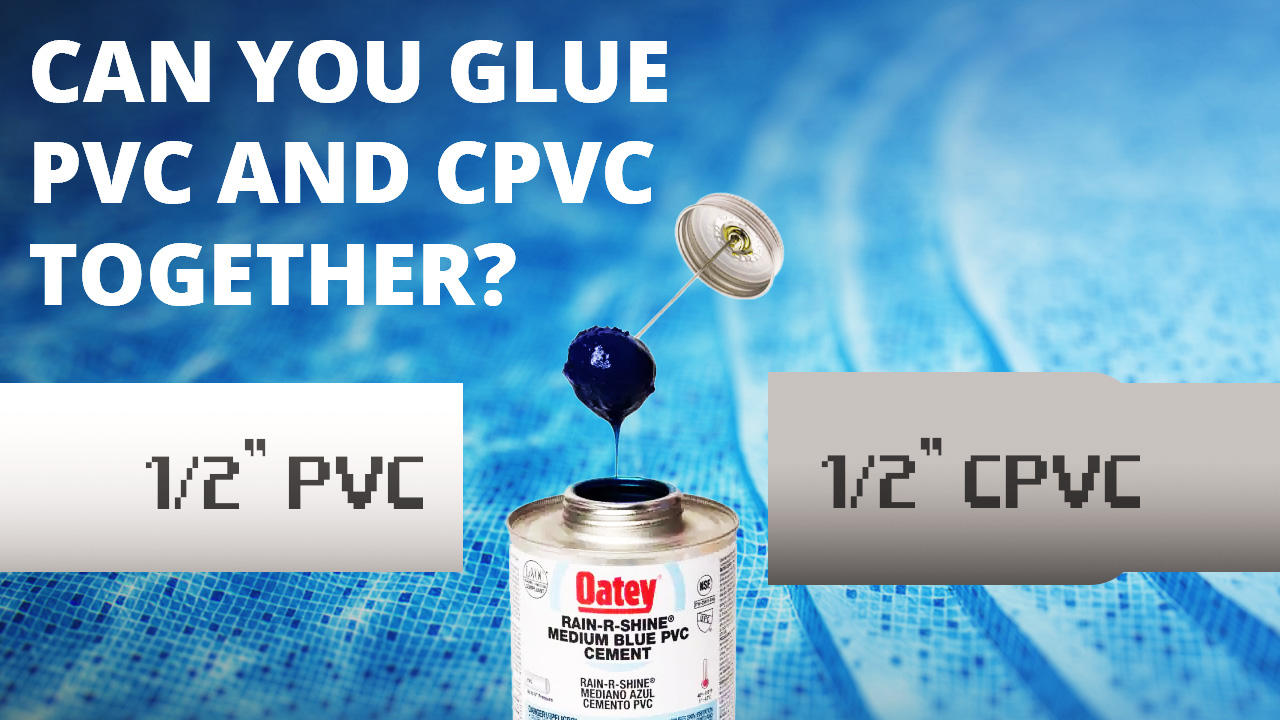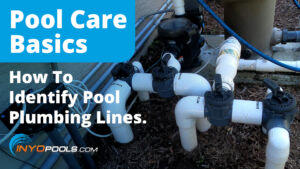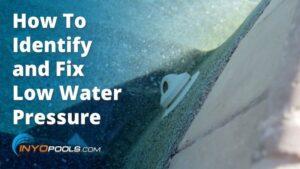One of the most frequent plumbing questions we come across is, “Can you glue PVC and CPVC together?” You can use both types of pipes to install pool equipment. However, their applications certainly differ.
In this article, we discuss the differences between PVC and CPVC, when to use them, and of course, we answer the question, can you glue PVC and CPVC together?
The Differences Between PVC and CPVC
At first glance, both PVC and CPVC look and seem identical. They are both plastic, and you use both in plumbing. However, if you had them side-by-side, you will notice the differences.

Composition
When CPVC gets created, it undergoes an extra chlorination phase. This allows CPVC to withstand higher temperatures a lot better than PVC pipes. In fact, PVC begins to deteriorate and break down after 140F. Meanwhile, CPVC stays strong until 200F.
This makes CPVC pipes better suited for water supply lines for pool heaters, spas, and heat pumps. On the other hand, PVC pipes are perfect for drains lines because they are cheaper and do not rust.
Sizing
Before you can answer the question, “Can you glue PVC and CPVC together,” you first need to determine if sizing will be an issue. The short answer is yes. Sizing can be an issue of concern.
During manufacturing, all major PVC brands use NPS (Normal Pipe Size) standards. This is also called “schedules.” The most common sizes are Schedule 40 and Schedule 80. The schedule determines how thick the wall of the pipe will be. Any pipes using NPS standards, regardless of PVC or CPVC, will match in size.
For example, a Schedule 80 PVC and Schedule 80 CPVC will fit together because they both have identical inner and outer diameter measurements.
Still, we recommend paying special attention to CPVC pipes. CPVC is actually made in two different sizing standards: NPS and CTVS. CTS (Copper Tube Size) is the same size as copper piping. Though CTS pipes and NPS pipes are not compatible.
You can usually tell the difference between CTS and NPS by color. CTS is yellowish in color, while NPS CPVC is gray (Schedule 80) or off-white (Schedule. 40). They are also marked on the outside as well.
Does PVC Glue Work?
There is such thing as PVC glue, however, it’s not something we necessarily recommend using in your pool system. For starters, PVC glue, or cement, doesn’t work like normal glue. PVC glue breaks down the surface of the pipe to which you apply it and simultaneously chemically bonds them together. For this reason, you cannot use PVC glue to join them together.
Remember, CPVC is stronger than PVC and has a higher melting point. This means the standard PVC glue would not be sufficient to hold CPVC together.
There is no special “CPVC- to- PVC glue.” So, chemically joining CPVC and PVC requires solvent cement and primer that are strong enough to bond CPVC pipe fully. If you are unfamiliar with this process, we recommend reaching out to a professional.
Can You Glue PVC And CPVC Together?
So, to answer the question finally, “Can you glue PVC and CPVS together? Yes, you can glue PVC and CPVC together, but why would you want to?
Remember, PVC and CPVC have different chemical compositions, giving them different properties and applications. Still, if you have your mindset on using both, make sure that you meet requirements for both types.
For example, a pool system with both PVC and CPVC will need to remain under 140F. This will ensure that your PVC stays in good working condition. However, this cripples the CPVC and its potential. Not to mention, CPVC is more expensive than PVC. You can glue them together but it would be pointless in the long run. Instead, you can install PVC in your whole pool system and achieve the same purpose and save money.












Leave a Reply